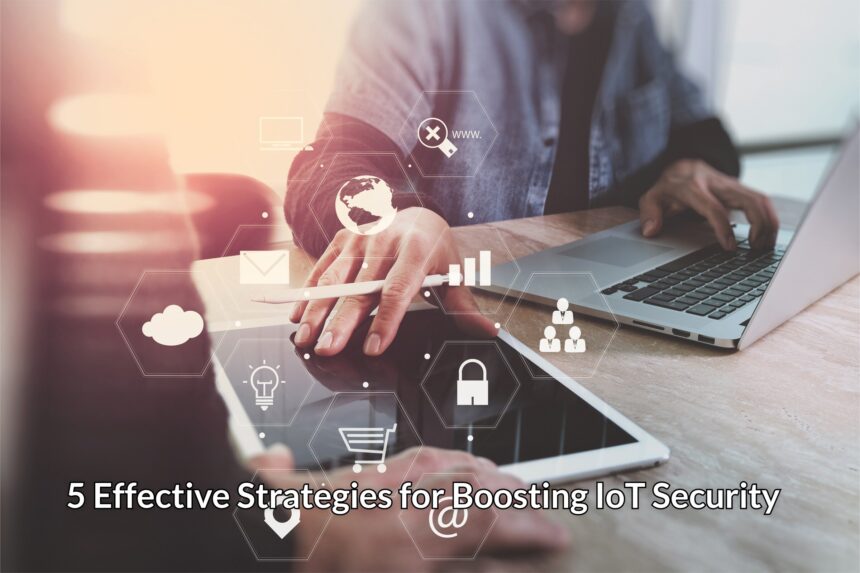With the emergence of IoT devices that are being rolled out from time to time, the serious IoT security issues encountered by users can’t be ignored. This serious problem is often discussed by analysts and experts, but it’s necessary to take proactive action. It has been predicted by Gartner that the size of the IoT market will continue to bloom at an unprecedented rate. According to him, 26 billion units will be made available by 2020. Smartwatches, smart light bulbs, IP cameras, industrial automation, connected car and smart home are no longer new concepts. IoT devices offer benefits such as convenience. For instance, smart home appliances assist users to carry out simple tasks like adjusting temperature or locking a door.
IoT basically comprises of devices that are connected to each other through the internet. These devices are usually embedded with sensors. Security wasn’t prioritized when the first set of IoT devices were released around two years ago. In recent years, there have been countless reports of attacks against them. Some of the top brands that many people believed to be immune against any security issue experienced data breaches.
There are so many risks associated with an IoT system that isn’t well secured. On the part of stakeholders, it can result in the loss of a huge sum of money and reputation. Organizations and other users that are affected are likely to encounter third parties hacking their devices as sensitive data are being sent or received. Apart from that, they may be exposed to spying or cyberstalking. Consider the following strategies to improve the security of your IoT devices.
1. Make use of strong passwords
The number one thing that put consumers at risk of a security breach is using a weak password on smart devices. It’s common for many people to keep using default passwords on their devices. This can lead to attack by the Mirai Botnet which is responsible for searching the internet for IoT devices that are protected by default passwords and usernames. Endeavor to set very strong passwords for all devices and change them regularly. Setting different passwords for each device guarantees a safer IoT.
2. Understand the privacy policy
Both the manufacturers and consumers have their roles to play in order to achieve a secureIoT. Companies are expected to include security during the early stages of designing the devices. This is because consumers need to be assured that they are purchasing safe products. They should also take security measures to protect users, devices, servers and network connections. More so, qualified staff must be hired so that privacy concerns will be handled professionally. On the other hand, consumers should know how the collected data from their devices will be used and those who can access it. Organizations that provide a clear and suitable privacy policy tend to have an edge over others. It goes without saying that if a device or app is asking for a permission that seems out of a place, decline it at once.
3. Implement an up-to-date encryption protocol
Most of the IoT devices that were manufactured in the last two decades or so are still running the software that came with them. Due to this reason, their firmware can be difficult to be upgraded manually or automatically. As a matter of fact, avoid outdated encryption algorithms at all costs and keep the two-way communication well secured with the appropriate encryption protocol. Ensure that the firmware on all of your IoT devices are updated to the latest version.
4. Establish secure internet connections
There is an urgent need to ensure that network and communications channels are secure in every aspect. Wearables like smartwatches and fitness trackers have support for Wi-Fi and Bluetooth connectivity. They transmit data via these channels. It’s unnecessary to connect wearables directly to your smartphone whenever you want to use them. To be on the safer side, users are usually advised to switch off Universal Plug and Play (UPnP) on their router and device. Taking this approach ensures that unsafe external connections are prevented. Without mincing words, IoT devices that require a cloud service are at a high risk of leaking sensitive information. DDS (Data Distribution Service) is one of the IoT technologies utilized by organizations as it allows secure data communication between various devices and the cloud. It has a very high performance when compared to Advanced Messaging Queuing Protocol (AMQP) and Java Messaging Service (JMS).
5. Adopt IoT security best practices for devices
Even though the importance of Consumer Internet of Things and the Industrial Internet of Things differs, they still share some basic security requirements. Hand held devices, especially smartphones serve as the control center for IoT devices and network connections. When taking measures to secure your smartphones, remember to make plans for network security too. Connecting your device with just any available network is risky. Social media platforms can reveal your location when using wearables, so use them with caution.

